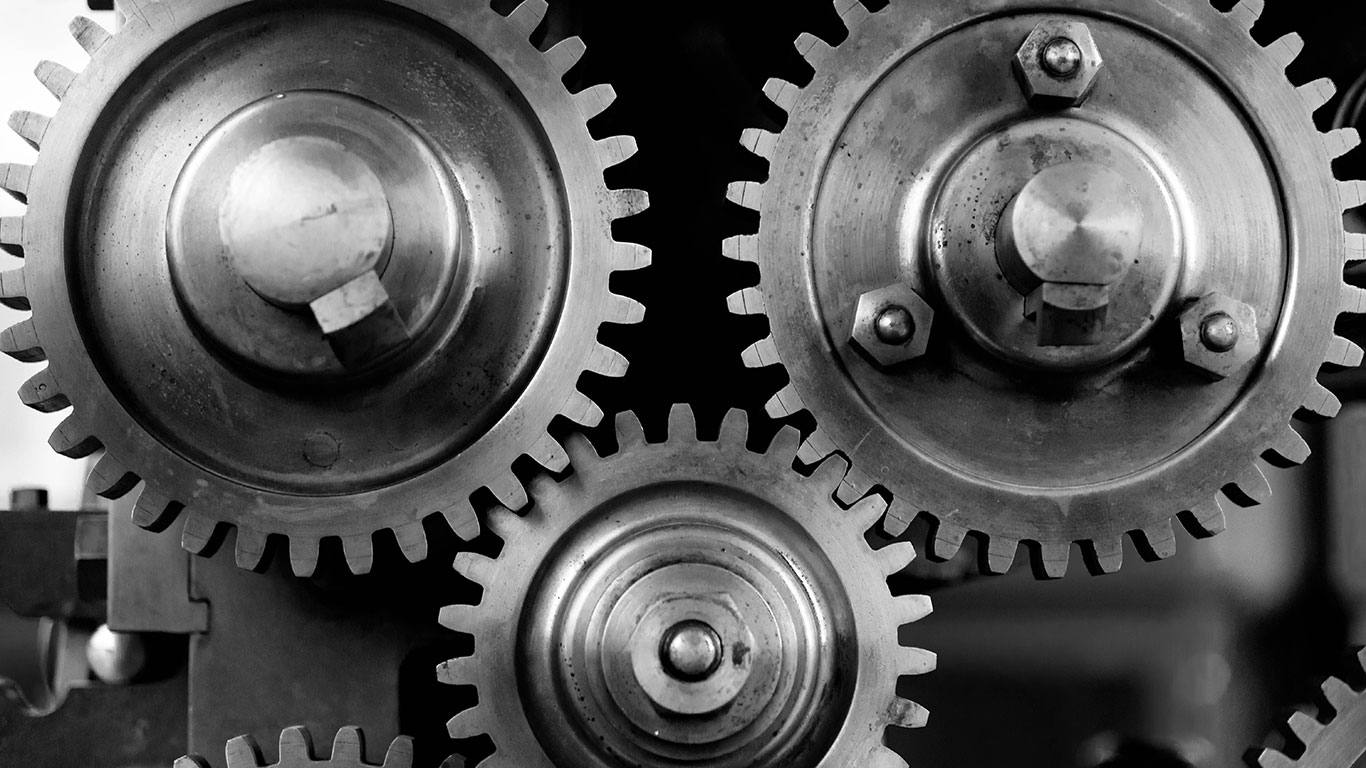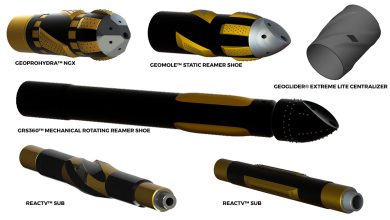EU machine tool market to mark a robust recovery in Q1
According to CECIMO (European Association of the Machine Tool Industries) Economic and Statistical Toolbox (March – April 2018), the latest data confirms that Europe concluded the first quarter of 2018 in a continuously expansionary mood, although at a slower pace if compared to the previous quarter.
J.P. Morgan and Goldman Sachs revised the GDP gains downwards, signalling fading optimism for the first quarter. If the projections held, it would be the best quarter since mid-2009.
Looking back at 2017, the Eurozone concluded the year with a 0.6% quarterly GDP pick up, supported by recovering investment. Consequently, annual figures show a final 2.4% growth rate in both EU and Euro-area economies. Machine tools (MT) manufacturers used the momentum to rebound trade by strengthening exports, and to mark a robust recovery of production. CECIMO-based MT manufacturers, specifically, registered a 6.2% gain in output.
Recently, political turbulences have been under the spotlight, but markets are yet to react to threats of trade protectionism and the failure of the Italian government to comply with its fiscal obligations. Therefore, the economic climate is still hyped up.
Oxford Economics’ baseline predictions for the Eurozone hint at a 2.3% growth rate in 2018 and 1.8% in 2019, or 1.9% in 2018 and 1.5% in 2019 if taking into account US protectionism. Analysts from Focus Economics more optimistically forecast robust growth of 2.4% in 2018 and 1.9% in 2019, as it seems that the common currency bloc will sustain recovery.
The European Central Bank (ECB) intends to maintain accommodative interest rates, and safeguard a prudent and persistent monetary policy to further foster investment and satisfy demand, with expectations of hard evidence of a sustained recovery.
The ECB’s bond-buying programme will last at least until September 2018, with the possibility of extension.
Central and Eastern Europe registered an eleven-year high in 2017 – which was pushed along by the Czech Republic, Hungary and Poland – against all odds and political concerns. Hungary and Poland’s outstanding success in the fourth quarter is largely due to EU investment fund inflows and wage increases. Households in both countries benefited from rising incomes. At present, however, Brussels is avoiding the additional friction that would come from suspending EU budgetary funds.
Furthermore, the long-term prospects still offset the economic upturn, as private investment tend to avoid faulty rule of law systems. In the short term, however, the expectations are bright. Favourable borrowing conditions, new employment and foreign demand should support the activity.
A cloud of uncertainty is hanging over the US and its major trading partners, who face the possibility of a trade war. On 23 March, having gained news of US president Donald Trump’s move towards protectionist measures, the EU published a list of products subject to retaliatory import tariffs. Subsequently, Donald Trump decided to temporarily exempt the EU from tariffs on aluminium and steel. Later, in April, he threatened China with an additional USD 100 billion in import tariffs, which triggered Beijing to release its own list.
Although Trump’s protectionist actions could be perceived as well-intentioned, they are unlikely to prompt any behavioural change in Chinese trade and intellectual property practices. Rather, they are likely to unleash a domino effect of retaliation lists of tariffs from the global trade operators. In addition, 30% of goods value exported from China to the US is added at the level of other smaller open Asian economies, such as Taiwan, Singapore, South Korea, or Japan, which export goods to China that end up in the US. By damaging the two largest economies in a trade war, other economies might suffer what The Economist magazine nicknamed the ‘supply-chain pain’.
Data specific to the European machine tool market
The buoyant economic morale at the end of 2017 marked an extremely good closure of the year for machine tool builders. The total orders skyrocketed to an unprecedented score of 185, well above pre-crisis levels. Therefore, CECIMO 8 orders for the fourth quarter marked a 24% increase quarter-on-quarter, and a 16% increase compared to the same quarter in 2016. A solid 38% increase, compared to the previous quarter, was registered in Spain, although it did not reach its 2016 levels. France saw an improvement, yet the order levels were -45% lower than in the same period last year.
The UK, on the other hand, saw a -5% decrease in total orders, compared to the third quarter, and a -2% decrease compared to the same quarter of 2016. The Czech Republic registered a mild decrease from quarter three, as imports by machine tool users grew over 2017. The indicator still picked up +6% from the fourth quarter of 2016, which is a more modest rate compared to other positive change rates within CECIMO. Among CECIMO members, the total orders in Italy show the steepest increase, 49%, after the -21% drop previously registered. Austria, Switzerland and Germany improved their orders both quarterly (29%, 20% and 17%, respectively) and yearly (17%, 21%, and 24%, respectively). Meanwhile, the US reports a 17% stronger demand than in the previous quarter, which is 9% higher than in the fourth quarter of 2016.
The Italian increment is driven by a great expansion in domestic orders, which more than tripled from the third to the fourth quarter. These efforts mark a surge of 87% since the fourth quarter of 2016. Austria and Switzerland almost doubled their order levels, registering 97% and 86% increases over the fourth quarter, equivalent to a 46% and 56% increase compared to the end of 2016. The UK scored -4% lower on the domestic demand side compared to the third quarter of 2017, but still 17% above the levels last year. Whereas France, despite a solid 35% increment, has seen a -30% decline in domestic orders since the fourth quarter last year.
On the foreign orders front, France and Spain showed predominantly high gains, although these levels are substantially lower (-51% and -33%) compared to the fourth quarter of 2016. The UK scored worse both on a quarterly (-5%) and yearly (-12%) basis. The Czech orders decreased by -10%, also due to a deterioration of exports to Russia. Despite this, the demand was still 11% higher than in the same period last year. Germany and Austria saw an increase of foreign demand by 13% and 12%, since the last quarter, or 13% and 15% since the fourth quarter last year.
The EU Asian counterparts, however, have painted a much more varied picture. On one hand, Japan reported an 11% improvement for the metal forming sector and 12% for metal cutting machines over the last quarter of 2017. This accounts for a 15% pickup for machine forming and a substantial 48% increment for metal cutting machines since the same quarter in 2016. On the other hand, Taiwan and South Korea registered a moderation of the total demand, each by -9% and -2% since the third quarter.
These levels are still -7% lower than last year for Taiwan, but +11% better for South Korea. The deterioration of demand for Taiwanese machine tools comes from a -8% fall on the domestic side, accentuated by a -10% fall from foreign clients. It might suggest the country’s exposure to negative external developments in economic and trade conditions. In the case of South Korea, the downward pressure on orders is rather due to the deterioration of foreign demand in the fourth quarter, although it has recorded a 24% higher level since the fourth quarter last year. This can probably be explained by a slowdown of Chinese demand and challenges in the external environment, compensated by enduring expectations of business investment.
CECIMO 8 Forecast
In 2018, the demand is foreseen to grow at 10%, but is likely to reach its peak by the end of 2018 to spring 2019.
As for the emerging countries, the market picture varies. Chinese consumer sentiment is at its highest point, but consumption growth rates have been falling in real terms over the last decade – indicating around 8% per year. India shows robust production increases, although investments are still lagging behind. The Russian consumption collapse, due to embargoes, hasn’t yet recovered. Brazil, despite its critical economic situation, managed to push industrial production upwards. Altogether, the demand for capital goods in emerging countries appears to be remaining high.
CECIMO trade
Towards the end of 2017, CECIMO trade saw an astonishing rebound. In the fourth quarter, EU machine tool builders exported more than EUR 5.6 million worth of machine tools, which is 16% higher compared to the third quarter. Although some of the improvement is cyclical, these levels are 9% higher than in the same quarter of the previous year.
Based on the latest Eurostat figures, in 2017, CECIMO reached an all-time record-high total export volume of around EUR 20 billion, therefore registering a 9.5% annual growth rate – above the forecasts, but well in line with the euphoric economic sentiment and business indicators towards the end of 2017 – beginning of 2018.
There are several positive factors that drove up the yearly growth. Exports to all regions considerably improved during 2017. Intra-European exports (including but not limited to CECIMO countries), which account for 52% of the total exports in 2017, grew by 9% over the year. Exports to the Asian destination markets – with a 24% of market share – also increased by 11%.
The Americas imported 12% more of CECIMO-built machine tools than in 2016.
Moreover, EU exports to Russia and CIS countries registered a 13% yearly growth rate, which was due, to some extent, to the settlement of a number of market access and trade barriers in Russia during 2017.
Similarly, in 2017, CECIMO members imported EUR 10.7 million worth of machine tools, equal to an 8.8% yearly improvement compared to 2016. It seems that this growth was conditioned mainly by a 19% gain in import volume from Asia – an import origin that accounts for 31% of our total import market – and a more moderate improvement of 4% of machines originating from European countries. Curiously, throughout 2017, CECIMO members imported 40% fewer machine tools from Russia and CIS countries, pointing to a further deterioration of European-Russian trade flows.
The yearly export volume to China, for instance, increased by 13%. Exports to the US, Mexico and Brazil improved by 10%, 24% and 31% respectively. Exports to the Asian markets showed considerable growth rates, except for South Korea, where it was seen a -14% drop over the year.
CECIMO production
The early figures for 2017 point to a strong recovery for European machine tool production. 2017 has been a great year for EU manufacturers, as well as for the global expansion of the economy. After the mild drop in 2016, CECIMO members saw a +6.3% increase in output last year, thereby registering a turnover of about EUR 25.8 billion. Once again, CECIMO-based machine tool builders did not only show robustness when coping with the feeble international context, but also an aptness to use the momentum of an economy in high spirits.
CECIMO remains the leader in global machine tool production, holding about 37% of the market share, which has been confidently recovering since 2015, following a two-year consecutive drop. Based on the most recent data for 2017, China has held its market share at 21% (or 31% according the official Chinese statistics). The US stands at 6.3% of the global market share in the same period. Japan, South Korea and Taiwan have increased their weight in global output by a fraction of a percent since 2016. However, in the bigger picture, the shares of the pie remained relatively equal for global producers from 2016 to 2017. Japanese and South Korean levels of machine tool production are comparable with those of Germany and Italy in Europe.
Within CECIMO, in 2017, most of the members enhanced their national production in absolute terms, with Belgium registering the most impressive year-on-year growth rate at 36%. Denmark and the UK recovered by 11% and 10% after the previous year’s shortfall. Germany, Italy and Spain increased their national production by 6.6%. Italy has been doing equally well for two years in a row. The Czech Republic, conversely, has registered a -2% drop in production, possibly due to decreasing foreign orders from Russia and despite the beneficial national economic context in 2017. Switzerland registers a milder +4.3% expansion, recovering after previous year’s drop. Some national activity figures are yet to be adjusted.







